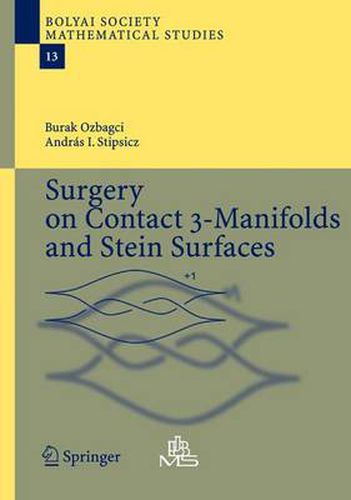Readings Newsletter
Become a Readings Member to make your shopping experience even easier.
Sign in or sign up for free!
You’re not far away from qualifying for FREE standard shipping within Australia
You’ve qualified for FREE standard shipping within Australia
The cart is loading…






This title is printed to order. This book may have been self-published. If so, we cannot guarantee the quality of the content. In the main most books will have gone through the editing process however some may not. We therefore suggest that you be aware of this before ordering this book. If in doubt check either the author or publisher’s details as we are unable to accept any returns unless they are faulty. Please contact us if you have any questions.
This book is about an investigation of recent developments in the field of symplectic and contact structures on four and three dimensional manifolds, respectively, from a topologist s point of view. The level of the book is appropriate for advanced graduate students. There is no doubt that symplectic and contact structures are in the center of attention nowadays for low-dimensional geometers and topologists. In this volume there are two main issues that are addressed: what kind of symplectic and contact structures we can construct via surgery theory and what kind of symplectic and contact structures are not allowed via gauge theory and newly-invented Heegaard-Floer theory. It turns out that interesting results about contact structures can be obtained for example when the classical surgery theory is coupled with the Heegaard-Floer theory. The close relationship between symplectic and contact structures is another theme in the volume which naturally arises when one wants to perform symplectic cut and paste operation. The material in the volume is based on two groundbreaking results of the near past Donaldson’s result on the existence of Lefschetz pencils on symplectic four manifolds and Giroux’ correspondence between contact structures and open book decompositions on three manifolds. The volume makes an attempt to illustrate some consequences of these results and incorporate them with the new developments in the Heegaard-Floer theory, especially the Ozsvath-Szabo contact invariants.
$9.00 standard shipping within Australia
FREE standard shipping within Australia for orders over $100.00
Express & International shipping calculated at checkout
This title is printed to order. This book may have been self-published. If so, we cannot guarantee the quality of the content. In the main most books will have gone through the editing process however some may not. We therefore suggest that you be aware of this before ordering this book. If in doubt check either the author or publisher’s details as we are unable to accept any returns unless they are faulty. Please contact us if you have any questions.
This book is about an investigation of recent developments in the field of symplectic and contact structures on four and three dimensional manifolds, respectively, from a topologist s point of view. The level of the book is appropriate for advanced graduate students. There is no doubt that symplectic and contact structures are in the center of attention nowadays for low-dimensional geometers and topologists. In this volume there are two main issues that are addressed: what kind of symplectic and contact structures we can construct via surgery theory and what kind of symplectic and contact structures are not allowed via gauge theory and newly-invented Heegaard-Floer theory. It turns out that interesting results about contact structures can be obtained for example when the classical surgery theory is coupled with the Heegaard-Floer theory. The close relationship between symplectic and contact structures is another theme in the volume which naturally arises when one wants to perform symplectic cut and paste operation. The material in the volume is based on two groundbreaking results of the near past Donaldson’s result on the existence of Lefschetz pencils on symplectic four manifolds and Giroux’ correspondence between contact structures and open book decompositions on three manifolds. The volume makes an attempt to illustrate some consequences of these results and incorporate them with the new developments in the Heegaard-Floer theory, especially the Ozsvath-Szabo contact invariants.